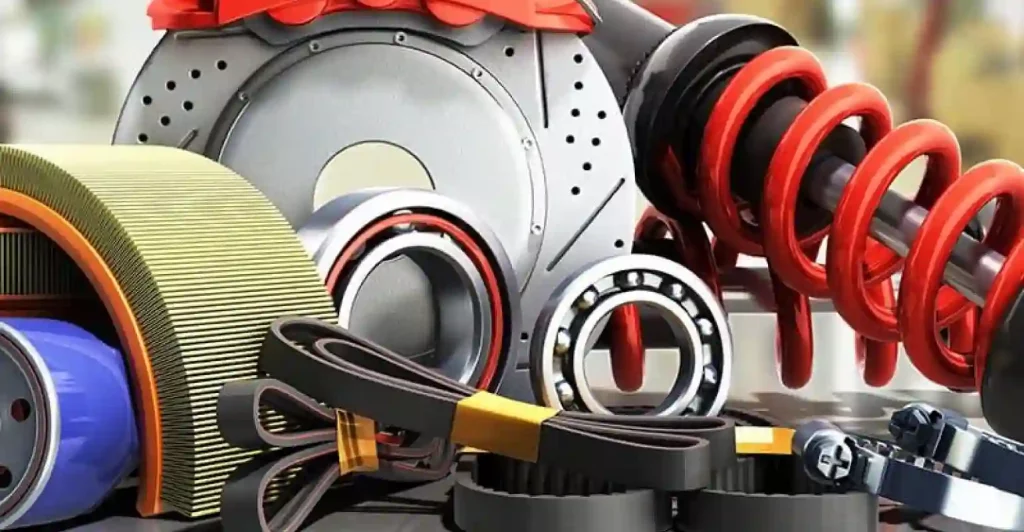Driving a car is an important part of many people’s lives. It is therefore vital to know how it works and understand the parts that make it up.
Spare parts are an integral part of a vehicle’s overall maintenance. Regular maintenance can prevent several spare parts from getting damaged.
Brakes
The brakes are one of the most critical safety systems in your car, allowing you to slow and stop the vehicle. They are located at the rear and front wheels of the car and include a brake drum, rotor, and brake pads.
Your brakes start working as soon as you press the pedal, with the pads contacting the rotor to create friction and cause your car to slow down. The brake rotor is a disc-shaped component that revolves with the wheel and hub, converting kinetic energy into heat to slow your car. There is a single brake rotor for each wheel on your vehicle.
Like your tires, the brake rotors and brake pads are susceptible to weather, road debris, and salt that can damage or wear down the components. To extend the life of your brakes, regularly check their condition and replace them as necessary.
If you’re looking for car spare parts, make sure to purchase them from a trusted source. Many counterfeit parts are sold on the market, which can lead to a series of breakdowns in your vehicle and pose major safety concerns. Look for parts that are certified by the original equipment manufacturer (OEM) or OEM/OES. The OEM/OES designation means that the part is an authentic, original product from the automaker’s supplier, and has been built to its specifications.
Oil Filters
Oil filters keep dirt, debris and sludge from circulating with engine oil. This protects expensive internal engine parts from damage by keeping lubrication at its best. They also prevent abrasions and wear on the connecting rod and camshaft bearings by trapping particles in their fibers before they get into the oil.
During normal operation, engine oil flows from the oil pump to the filter where it passes through openings in the base plate and into the inside of the filter. The oil then travels through the filter medium, a porous paper that typically is made of cellulose or glass fibers. The medium is pleated to create a large surface area for capturing contaminants. The ends of the filter are sealed with a metal end disc, which holds it tightly against the base plate.
The quality of an oil filter determines its performance. The low-cost disposable types sold in auto parts stores and quick lube outfits may not hold up under the stresses of long service intervals, shock load, vibration and changing motor chemistry. A premium oil filter will provide a much better filtration system to reduce contaminant levels and prolong the life of your engine. In fact, a study found that engines with high levels of fine dust (micron-sized) exhibited four times as much wear as those with low-particle contaminant levels.
Axle
The axle is a rod or shaft that connects a pair of wheels to propel them and retain their position relative to one another. It is also responsible for transferring power from the engine to the wheels and other parts of the vehicle. It is a crucial car component but one that many people tend to overlook. It is important to know its functions and keep an eye out for signs that it may need replacement.
Axles are made of robust materials to withstand the tremendous amounts of force that they have to handle. This is because they are responsible for supporting the weight of the car and its cargo, as well as absorbing shocks from rough roads. Unfortunately, they can still get damaged due to poor maintenance and accidents. If you notice a clunking or rickety ride, it is likely that the axle has been compromised and should be repaired immediately.
Axles are usually located under the body of the vehicle. They are connected to the driveshaft, which transfers the power from the engine to the front and rear axle assemblies in FWD vehicles. Modern AWD vehicles, however, have a transaxle which is essentially a transmission and differential in one. This transmits power to the front CV axles and the rear axle assemblies via a differential.
Fuel Injectors
The fuel injector is an electronically controlled mechanical device that sprays gasoline (or diesel) into your engine in the form of a fine mist. It’s supplied with pressurized fuel from the fuel pump and is operated by your car’s engine computer to optimize the amount of fuel delivered, as well as when it should be delivered. There’s one fuel injector for each of your engine’s cylinders.
A malfunctioning fuel injector can affect your engine’s performance in several ways. For starters, it may not be able to seal when its internal valve closes. This will lead to fuel leaking into the cylinder and preventing compression, which can damage your engine over time. It can also cause your car to start slowly and sputter when it’s idling.
It’s a good idea to have your car’s fuel injectors checked when your check engine light is on. It could indicate that your fuel injectors are dirty or clogged and need cleaning.
You can find your fuel injectors underneath the hood, on your vehicle’s intake manifold. You can spot them by the black plastic housing and a regular clicking sound they emit when they open and close to deliver fuel. A stethoscope or screwdriver can help you hear them better — just place the tip of the tool against an injector and listen for the regular clicking noise.
